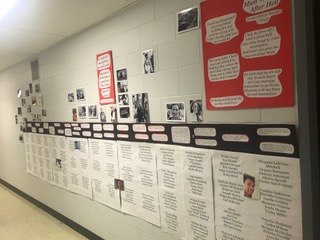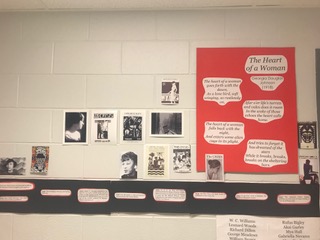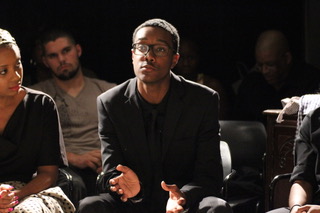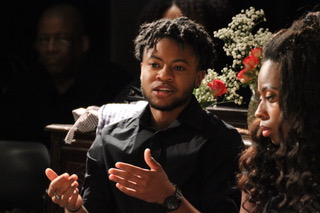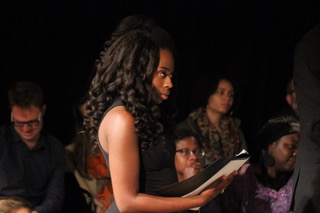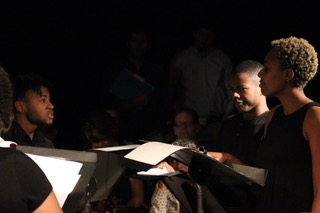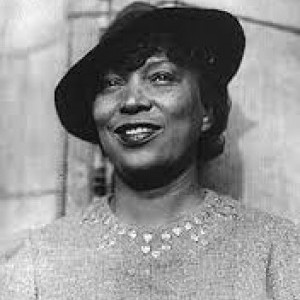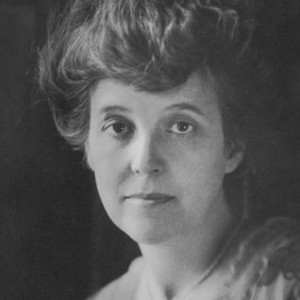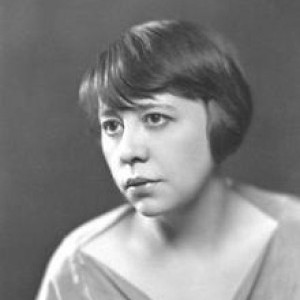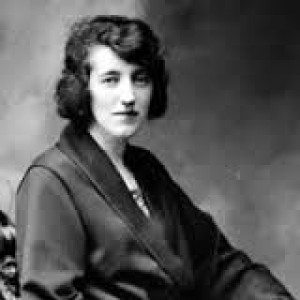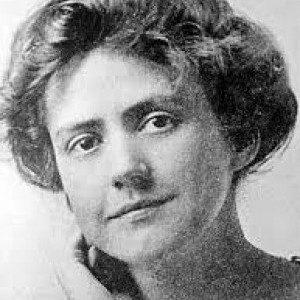Sallie Bingham Projects: Caroline R. Hill, Ohio State University, Part II
Caroline Hill, along with fellow grad student Aviva Neff, won inaugural Saliie Bingham Grants for their collaboration on the "She, Too, Sings America" festival they produced to honor women playwrights of the Harlem Renaissance. Here, Caroline shares another chapter of the process.
Our performance space is a rectangular black box, which comes with its own set of challenges but also accommodates a wide range of possibilities. One element of the production that Aviva and I agreed upon almost immediately was the way we wanted our space to feel for the audience. Georgia Douglas Johnson, who wrote one of the two plays we staged, A Sunday Morning in the South, was known not only for her poetry and plays, but also for opening her home to fellow artists and intellectuals in what became known as the S Street Salon—named for the street on which she lived. These gatherings fostered community and artistic growth. We wanted to evoke the feeling of these intimate gatherings as closely as possible, not only as a means of inviting the audience into the space, but because the S Street Salon is the kind of setting in which Sunday Morning and Eulalie Spence’s Fool’s Errand would have been performed in the 1920s. One way to create a warm and comfortable environment was to incorporate living room furniture throughout the space for the audience. Additionally, we created an oval-shaped play space to immerse the audience in the action of the plays.
With the S Street Salon in mind, we searched through the theatre department’s furniture storage—which was generously available to us—for Victorian-style pieces to incorporate into our space. In addition to a wealth of seating, we were also able to find beautiful pieces of furniture to incorporate into the performance space, including a buffet and period lamps. Finally, the department stock included several Victorian rugs, which we augmented with additional rug purchases in order to almost completely cover the floor. After taking stock of the core pieces for our show, we began working on finishing touches. Candles, flowers, frankincense oil, and live plants are some of the elements we utilized to help us fully realize the inviting space we hoped to create. A final addition to our space was refreshments. We were beyond excited to learn that a member of our cast and her mother own baking businesses, and we ordered cupcakes and scones for the audience to enjoy. In addition, we provided assorted cookies, coffee, and tea.
In contrast to the inviting environment we created within our performance space, audience members were first exposed to the dramaturgical display outside. A timeline, beginning in the 1910s and ending in the present-day, was a combination of significant cultural and political moments for African Americans, as well as the enduring legacy of attempts to enforce marginalization and white supremacy. The display was a significant way to both give the audience context before entering the performance space, as well as illustrating the continued relevance of Johnson and Spence’s work.
If the post-show discussion is any indication, the space we created helped foster an enriching community discussion in which audience members were comfortable sharing their thoughts and questions with each other during intermissions, and with our cast and facilitator—Dr. Treva B. Lindsey of the Department of Women’s, Gender, and Sexuality Studies—after the readings.
